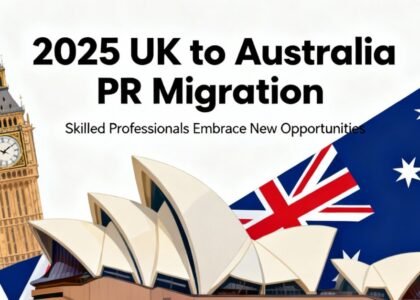Why Many Students Choose Australia for PR
Australia is one of the most popular among international students because it offers strong job prospects, high living standards and a migration system designed to welcome skilled graduates. If you are planning to get Australia PR, then pathways like the Skilled Independent Visa (subclass 189), Skilled Nominated Visa (subclass 190) and Skilled Work Regional Visa (subclass 491) are the easiest ways to get PR. Students should carefully choose their course based on future demand, as this gives them a strong advantage when applying for PR. They can do part-time jobs during their studying to gain work experience and improve their future career and PR prospects. Building relevant work experience through interships, part time job or industry placement during studies can strengthen your profile. These combination give you a strong competitive advantage when applying for Australia PR.
Step 1: Choose a PR-Friendly Course
Your PR chances start with selecting the right course that align with PR goal. Australia uses the Skilled Occupation List (SOL) to identify high-demand professions. Choosing a course linked to an occupation on the list can significantly boost your eligibility. Ensure the occupation has a clear skills assessment pathway through an authorised assessing body. A positive skills assessment is one of the core requirement for skilled migration.
Popular PR-pathway study fields include:
- Nursing and healthcare
- Engineering
- IT and cybersecurity
- Social work
- Teaching
- Trade courses (carpentry, automotive, fabrication)
- Accounting and finance
Step 2: Apply for the Temporary Graduate Visa (Subclass 485)
Most students move to PR through the 485 visa, which allows you to stay and work in Australia after graduation.
This visa acts as a bridge between your student visa and your skilled migration pathway.
During the 485 visa period, students can work full time to gain work experience in related field and it gives additional points for PR. These visas can be granted for 2 to 6 years, which gives you sufficient time to gain work experience requires for visa like 189, 190 or 491 visa.
There are two streams:
- Post-Study Work Stream – for higher-education graduates (Bachelor’s, Master’s, PhD).
- Graduate Work Stream – for vocational or trade course graduates.
Step 3: Get Your Skill Assessment
A skill assessment checks whether your qualifications and work experience match Australian industry standards. This is mandatory for most skilled visas such as the 189, 190 and 491 visas.
Common assessing authorities:
Engineers Australia
ACS for IT professionals
ANMAC for nurses
VETASSESS for general occupations
Step 4: Improve Your Points for General Skilled Migration
Australia uses a points-based system for skilled visas. The higher your score, the better your chances of receiving an invitation. You can use Australia PR points to instantly calculate Australia PR.
Points are awarded for:
Age
English test results (IELTS, PTE)
Australian study
Skilled employment
Completing studies in regional areas
Professional Year programs
State nomination (NSW, Victoria, South Australia, Queensland, WA)
Step 5: Apply for PR Pathways (189, 190, or 491 Visa)
Once you have enough points and a positive skill assessment, you can apply for PR.
Popular PR Visa Options
Subclass 189 – Skilled Independent Visa: No state sponsorship required; competitive but ideal for high-scoring applicants.
Subclass 190 – Skilled Nominated Visa: Requires nomination from a state; offers higher chances.
Subclass 491 – Regional Visa: A provisional visa leading to PR; easier for students willing to live and work in regional Australia.
FAQs
Yes. Studying in a regional area can give you extra PR points, better eligibility for the 491 regional visa, and more opportunities for state nomination. Regional states often have simpler requirements for international graduates compared to major cities like Sydney or Melbourne.
Work done during studies generally does not count toward skilled work points unless it is:
- In a relevant skilled occupation
- Paid properly
At a skill level equivalent to the occupation
Most students use their 485 visa to gain full-time skilled experience that counts toward PR.
A job offer is not required for visas like 189 and 190, but it can help with:
- Skill assessment (in some occupations)
Meeting state nomination criteria
Some states require job offers for occupations in demand, especially under the 190 and 491 visas.
Most PR pathways require at least 2 years of study in Australia to meet Australian Study Requirements. A 1-year course alone won’t qualify, but it may be acceptable if combined with another course to reach the 2-year minimum.





